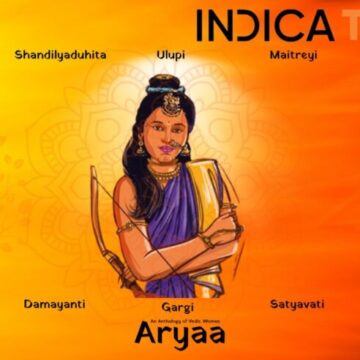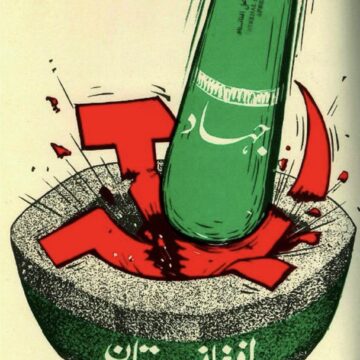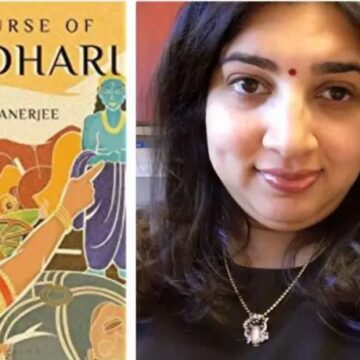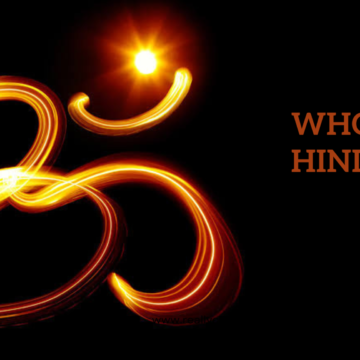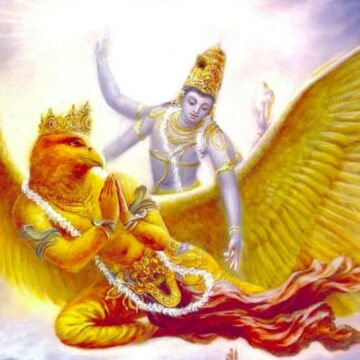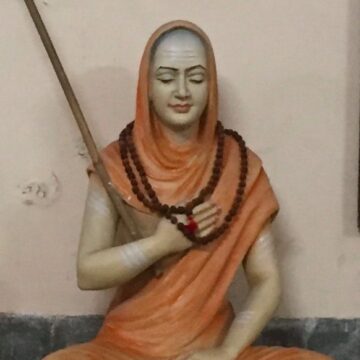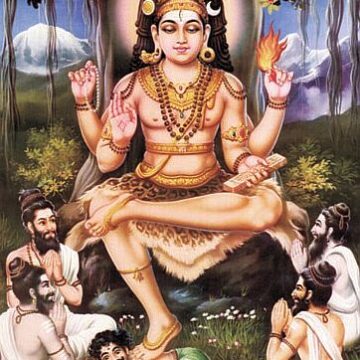In this review of Kantara, Rohan Raghav Sharma tackles the allegations that the film depicts women in a poor light by analysing the actions of the key characters as well as scenes that may be interpreted as such.
Tag: <span>Hinduism</span>
‘Aryaa’ – An Anthology of Vedic Women – Review
"Stories ranging from the Warrior princess Chitraganda who fights alongside Arjuna to the bold princess Ulupi who approaches Arjuna for the union of her own accord to Queen Subhadra who finds a different way of carrying out her dharma and supporting her husband than the conventional way one expects a wife to. Characters etched in the minds of popular imagination such as Satyavati, Shakuntala, and the duo Nala-Damayanti are also presented in a narrative that cannot fail to entertain and arouse interest. The most metaphysical and philosophical stories are undoubtedly those of Gargi, the Brahmavadini, and Maitreyi, the scholarly wife of the famed Yajnavalkya. These stories prove that while there were women steeped in the Shastric worldview, they were not purposely debarred from aspiring towards education and a spiritual path."
In this review of 'Aryaa - An Anthology of Vedic Women' Rohan Raghav Sharma discusses the need for such a book before delving into each of the ten stories told in the book. He gives detailed insights into each story along with his critique of the writing styles of the different writers.
The Fate Of Muslims Under Soviet Rule : A Review
"Communism, as the logical outcome of materialism, cannot but be hostile to religion in all its aspects. Thus from the very beginning, the Communists aimed at the destruction of religious belief and worship in Soviet Russia."
Halley Kalyan pens a review of “The Fate Of Muslims Under Soviet Rule” - a booklet about Soviet government rule in regions that had a significant population of practicing Muslims, by Erich W Bethman (1958); and highlights the shared antagonism towards religion (Hinduism in particular in the Indian context) between the Communist dogma and the Indian version of Secularism.
‘The Curse of Gandhari’ by Aditi Banerjee: A Review
Rohan Raghav Sharma reviews Aditi Banerjee's book titled: "The Curse of Gandhari"; and takes us on a journey through the plot, while analysing the construction of the narrative alongwith his understanding of the author's thoughts and approach.
Hindu, Hinduism, Hindudtva – Part 2
In the second part, Dr. Pingali Gopal discusses the evolution of political Hindutva after independence, and sheds light on the failure to define the basic terms as we struggle with the alleged rise of ‘Hindu fundamentalism'.
Hindu, Hinduism, Hindutva – Part 1
Who exactly is a ‘Hindu’ and what are ‘Hinduism’ and ‘Hindutva’? Does it mean the land (geography), ancestral roots (history), or a shared culture?
Dr. Pingali Gopal tackles this proverbial bull by the horns, systematically looking at attempts to define and distinguish ‘Hinduism’ and ‘Hindutva’ by Western thought, the Indian liberal elite, and practising Hindus.
Garuda – A Unique Amalgamation of Power, Royalty, Divinity & Faith
This article, discusses Garuda, the vehicle of the mighty Vishnu; his presence and influence in iconography and symbology in Bharat and beyond.
Śaṅkara Charitam – a re-telling – Chapter -14 – Aja Bakṣiṭha Bāśyaṃ
Chapter 14 of Śaṅkara Charitam, titled Aja Bakṣiṭha Bāśyaṃ, takes us through the experience of Śaṅkara’s Guru Govinda Bhagavatpāda learning from Gauḍapāda, cursed to be in the form of Brahmarākṣasa. What happens after the lessons are over, where destiny takes each of them - Śaṅkara, his Guru Govinda Bhagavatpāda, and his Guru's Guru Gauḍapāda; will be revealed in this chapter.
The Flawed and Dangerous New Educational Policy (NEP)
This article discusses the principal reasons that make the New Educational Policy (NEP) dangerous for Hindus and the traditional learning systems of Bharat. It does have some good points but the negatives far outweigh the positives to the extent that they may cause total destruction of Bharat’s ethos, culture, and values in a very short time.
Śaṅkara Charitam – a re-telling – Chapter-10 – Śaṃbhu-Śaṅkara
In the 10th Chapter of Śaṅkara Charitam, Śaṅkara starts his life as a saṃnyāsi and takes his first steps toward his Guru, his destiny. Shri Ramesh Venkatraman also delves into evidence regarding Śaṅkara being an avatāra-puruṣa, the active and vocal aspect of Śiva.


